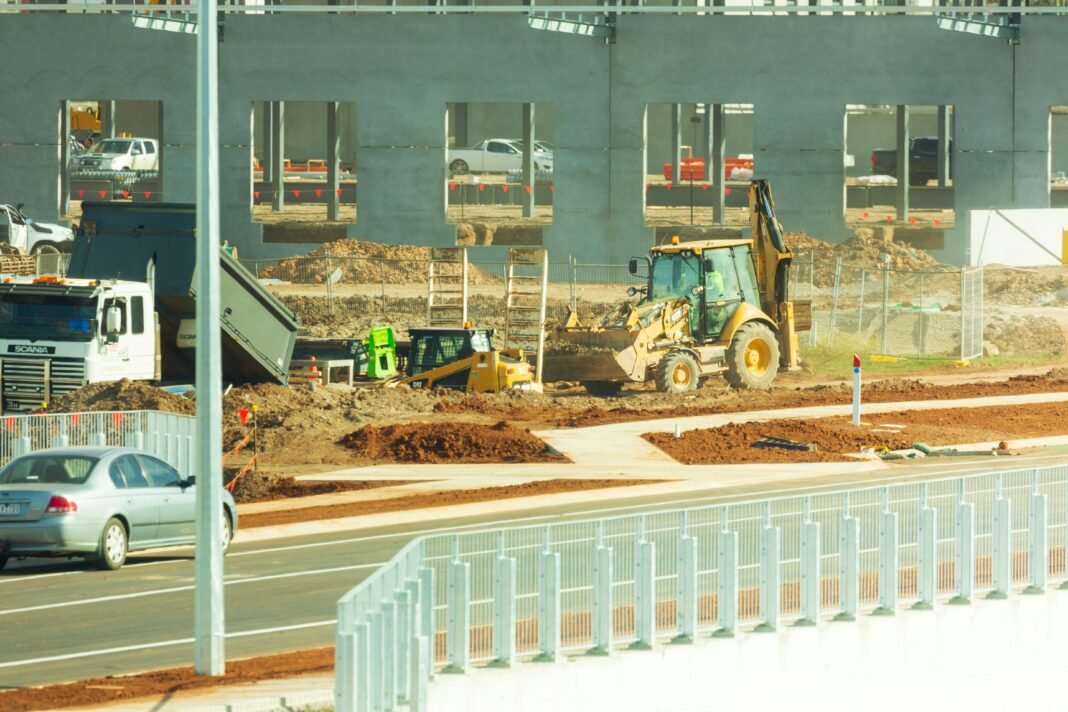Every successful building starts with a solid foundation, and that begins long before the concrete is poured. Site grading is the process of shaping land to create proper drainage, stability, and usability for construction projects. Without it, even the most advanced designs risk structural damage, water issues, and costly repairs.
Florida builders and property owners can safeguard projects against weather extremes, meet strict regulatory requirements, and ensure the site remains durable for decades. Whether managed by a small local contractor or a large civil engineering company, site grading and earthwork set the foundation for everything that follows in construction. In Florida, which is known for its heavy rainfall, flat terrain, and vulnerable coastal zones, proper grading isn’t just a best practice; it’s a necessity.
Why Site Grading Is a Cornerstone of Successful Construction
Site grading plays a critical role in protecting both structures and landscapes by ensuring water flows away from buildings, reducing the risk of flooding and foundation damage. A carefully prepared site grading plan outlines the required slopes, elevations, and drainage paths, providing accuracy while meeting regulatory compliance.
Beyond drainage, proper grading supports safety, accessibility, and environmental standards, making construction sites more functional and sustainable. When grading is poorly executed, the consequences can include soil erosion, water pooling, and uneven settlement that compromise long-term stability. Pairing grading with professional grading and site preparation helps avoid these pitfalls and prevents costly rework down the line.
What Is Site Grading?
At its core, site grading is the reshaping of land to achieve the correct slope, elevation, and drainage pattern for a construction project. Engineers and contractors use heavy equipment like bulldozers, excavators, and graders to cut, fill, and level the soil.
A site grading plan guides this process, showing how water should move, where soil must be added or removed, and how the ground must be shaped to support buildings, roads, or landscaping. These plans are crucial not just for design clarity but also for regulatory approval, as most municipalities require grading plans before issuing permits.
Why Site Grading Matters in Construction
1. Drainage Control
Water is one of the most destructive forces in construction. Improper grading can cause pooling near foundations, basement leaks, or soil erosion. A well-executed grading plan directs water toward storm drains, swales, or retention ponds.
2. Foundation Stability
Uneven or unstable soil increases the risk of structural settlement and cracks. Grading ensures a level base and compaction that keeps foundations secure over decades.
3. Safety and Accessibility
Slopes impact not just drainage but also walkability, driveway access, and compliance with ADA standards. Proper grading ensures safe and accessible site use.
4. Environmental Protection
Grading reduces erosion and sediment runoff, protecting local waterways. Many states, including Florida, enforce stormwater management regulations tied directly to grading compliance.
Step-by-Step: How Site Grading Works
- Survey and Analysis – Engineers assess the natural topography, soil type, and drainage patterns.
- Create a Site Grading Plan – Drawings outline proposed elevations, slopes, and stormwater controls.
- Cut and Fill – High points are excavated, and low points are filled to achieve design elevations.
- Compaction – Soil is compacted to prevent future settlement.
- Drainage Features Installed – Swales, ditches, or underground piping direct water away.
- Final Shaping – The site is smoothed and prepared for construction or landscaping.
Tools for Site Grading
Tools Commonly Used:
- Laser levels and GPS-based survey equipment
- Bulldozers, graders, and excavators
- Soil compaction machines
- Drainage modeling software
Pros & Cons of Site Grading
Pros | Cons |
| Improves drainage and prevents flooding | Adds upfront cost to construction |
| Creates a stable foundation for structures | Requires specialized equipment and expertise |
| Enhances safety and accessibility | Mistakes can be expensive to fix |
| Meets regulatory and environmental requirements | Can delay projects if not properly planned |
Common Mistakes in Site Grading
Even seasoned contractors can make errors during grading that create long-term problems. One of the most frequent mistakes is cramming elevations without accounting for drainage. A site might look level on paper, but if runoff paths aren’t considered, water can pool near foundations or low-lying areas. Over time, this leads to flooding, erosion, and expensive foundation repairs.
Another major issue is skipping proper soil compaction. When fill soil isn’t compacted in layers, it settles unevenly under the weight of a building or pavement. This results in cracked slabs, tilted sidewalks, and long-term maintenance costs that far outweigh the initial savings of rushing the process.
Oversteep slopes are also common, especially when trying to fit driveways or parking areas into tight spaces. While they may meet the elevation requirement, slopes that are too steep can make surfaces unsafe for vehicles and pedestrians, while also accelerating soil erosion during heavy rain.
Coordination matters just as much as calculations. Poor alignment between grading and landscaping plans often causes conflicts, such as planting areas sitting in drainage swales or irrigation systems installed where runoff should flow. These oversights compromise both site functionality and aesthetics.
Lastly, ignoring local codes and permitting requirements can halt a project entirely. Many municipalities require stormwater management plans tied directly to grading. Overlooking these regulations leads to costly redesigns, permit delays, and sometimes fines. In short, grading mistakes don’t just impact construction; they can derail entire projects before they even break ground.
Next Steps: Ensuring Proper Site Grading
The success of any project begins beneath the surface. Investing in professional site grading and partnering with experts ensures your land is stable, compliant, and ready for construction. Always request a detailed site grading plan, verify drainage compliance, and confirm compaction tests before moving forward. Taking these steps not only saves money but also protects your project against future risks.
Equally important is bringing grading into the conversation early. Too often, grading is treated as a secondary task after design decisions are made. In reality, it should guide those choices. The slope of your site, the soil type, and drainage paths all influence where buildings, parking lots, and landscaping should be placed. By aligning the grading plan with architectural and civil engineering designs, you create a more efficient and cost-effective project.
Ongoing monitoring is another overlooked step. Grading doesn’t end when the machines leave the site; inspections during construction help confirm that slopes, drainage features, and erosion controls are performing as designed. A project may meet code on paper, but still fail in practice if water collects where it shouldn’t. Regular checks prevent small issues from becoming major failures.
Finally, think beyond compliance. Good site grading isn’t just about passing inspections; it’s about protecting property value, safeguarding the environment, and ensuring usability for decades to come. By treating grading as a long-term investment rather than a box to check, you position your project for lasting success.
FAQs
1. What is the purpose of site grading in construction?
It creates proper slopes for drainage, supports foundations, and ensures long-term stability.
2. What is included in a site grading plan?
Slopes, elevations, drainage paths, erosion controls, and compliance details for permits.
3. How much does site grading cost?
Costs vary by project size and soil condition but typically range from $1,000 to $5,000 for residential lots (May 2025).
4. Can site grading prevent flooding?
Yes. Proper grading directs water away from structures and into designed drainage systems.
5. Who prepares a site grading plan?
Licensed civil engineers or land surveyors typically prepare grading plans for approval.
6. Is site grading always required?
Yes, for most construction projects, especially when local codes mandate stormwater management.


